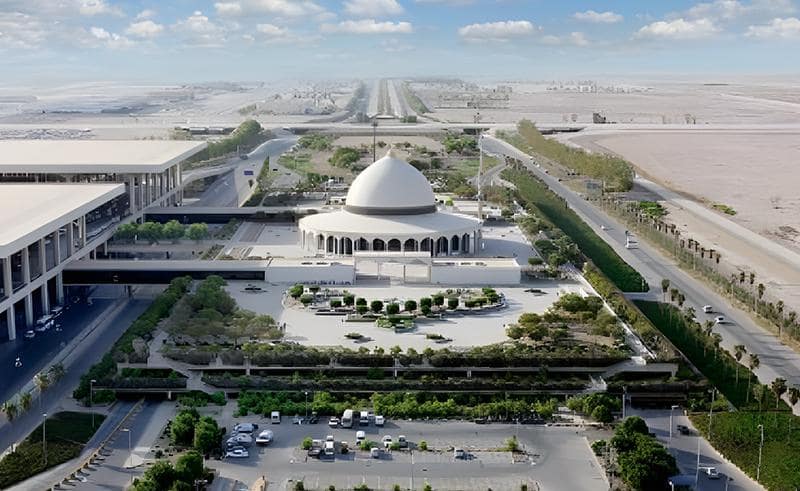The King Fahd International Airport is the world’s largest airport. It spans a vast area of approximately 776 square kilometers (nearly 301 square miles). The King Fahd International Airport holds the prestigious title of being the world’s largest airport.

| Built Year | Located | No. of Terminals | No. of Runways | Area |
|---|---|---|---|---|
| 1999 | Dammam, Saudi Arabia | Two | Two | 776km² |
Saudi Arabia’s King Fahd International Airport (KFIA) is situated in Dammam province located approximately 22km northwest of Dammam and is well connected by Dammam-Riyadh Highway and Abu Hadriyah Highway. It is one of the remarkable showcases of human development and engineering. Covering about 776 square kilometers (301 square miles) of area, it proudly holds the distinction of being the world’s largest airport globally.
Since it was opened in 1999, this exceptional aviation center has linked the Kingdom of Saudi Arabia (KSA) to different destinations across the world, catering to millions of passengers each year.
This Airport has been designed to accommodate the high demands of air travel, King Fahd International Airport (KFIA) boasts state-of-the-art facilities. Its vast terminal complex features modern amenities, including prayer rooms, lounges, duty-free shops, restaurants, and business bay facilities, ensuring the utmost comfort and convenience for travelers.
The airport’s expansive runway comprises two parallel runways, each one having 4 KM length (about 13,123 feet) and capable of accommodating the world’s largest commercial aircraft. This strategic layout enables KFIA to handle a vast array of aircraft types and ensures smooth operations even during peak hours.
KFIAs standout feature is its tall and wide control tower, a soaring height of 80 meters (262 feet), making it one of the tallest air traffic control towers globally.
The KFIA serves both domestic and international travel. In addition to its passenger terminals, King Fahd International Airport boasts dedicated cargo facilities as well, including extensive cargo aprons, warehouses, and logistics centers. These facilities cater to the growing demand for air freight services, with efficient movement of goods and commodities across the globe.
With these additions, the total number of served destinations reached 61, comprising 16 domestic and 45 international routes (Till end of 2023).
